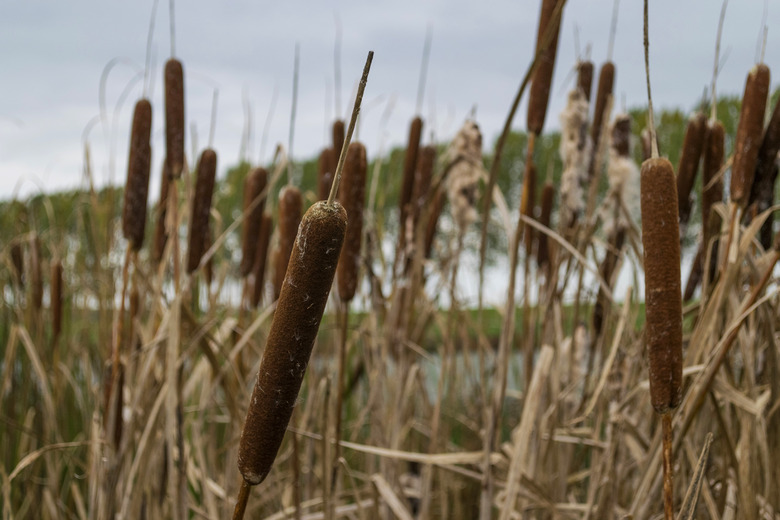How To Dry Bulrushes
Also known as the common bulrush, the common cattail (Typha latifolia) is a grass-like plant that grows along marshes and wetlands. These plants are known as marginal plants because they grow around the edges of ponds and other shallow bodies of water.
Whether fresh or dry, these pond plants can make an attractive addition to a floral arrangement. Cattails are perennials that are hardy in USDA plant hardiness zones 3 to 10.
What Are Bulrushes?
Typha latifolia is native to North America and Eurasia. These marsh plants spread by underground stems known as rhizomes and can crowd out other marginal plant species as they spread. Bulrushes provide shelter for aquatic birds and other wildlife.
The most distinctive feature of a bulrush plant is the upright cylindrical inflorescence made up of tiny flowers. This species is referred to as monoecious, because a single plant contains both male and female flowers. Yellow male flowers are clustered at the top of the inflorescences, and the green female flowers are directly below.
Tip
Cattails are known for their brown fruiting spike, which is left behind after the female flowers have been pollinated and have set seed.
Bulrush plants bloom in June and July, when the male flowers pollinate the female flowers and then disperse. The female flowers turn brown when pollinated, forming the 9-inch-long fruiting spike that the plants are known for.
Plants in the genus Scirpus are also referred to as bulrushes, though they are not commonly used as ornamentals.
How to Dry Cattails
**If you want to preserve cattails, it is important to harvest them as soon as the pollinated female flowers have turned brown.** There should be some flowers visible at the top of the inflorescence. If you wait too long to pick the cattails, the flowers will shatter in order to scatter their seeds.
Cattails are somewhat dry when picked. To finish drying them, you can tie them in bunches and hang them upside down to dry in a dark place with little air humidity and good air circulation. However, they can also be allowed to dry upright in a jar or a vase.
With many flowers, you'll want to remove all of the foliage before drying, but cattail leaves look attractive when dry and can be left on the plant.
Because bulrush seed heads are somewhat fragile, spraying them with hair spray or an aerosol lacquer can help protect them.
Tip
Harvest cattails as soon as the fruiting spike turns brown; otherwise, they might shatter.
References
- North Carolina State Extension: Typha latifolia
- University of Wisconsin Extension: Plant Crafts – Drying Flowers
- Missouri Botanical Garden: Typha latifolia
- University of Florida IFAS Extension: Drying and Preserving Plant Materials for Decorative Uses
- Cornell Cooperative Extension: Drying Flowers – What You Need to Know
